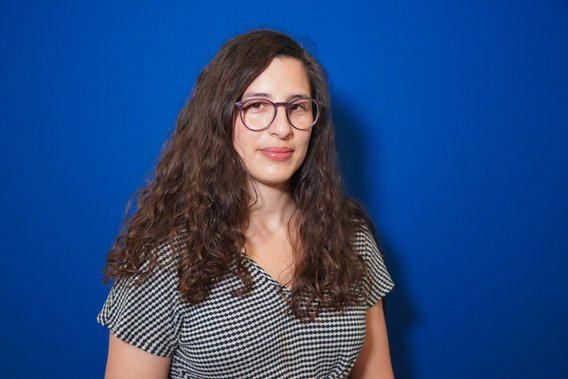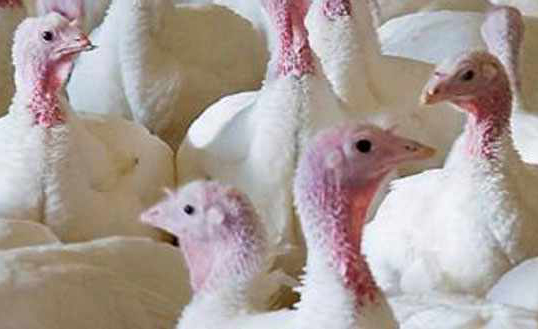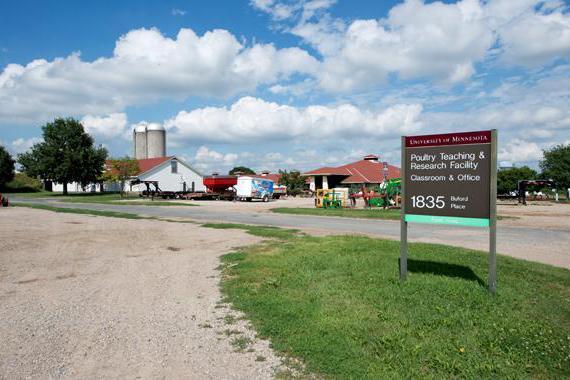
Behind the research: Understanding poultry reproduction

Animal Science Assistant Professor Kahina Boukherroub, PhD, is a reproductive biologist investigating mechanisms of ovarian function in agriculturally-relevant bird species, with the ultimate goal of addressing problems in the chicken and turkey breeder industries. Her research efforts will also contribute to basic knowledge about ovarian function that can be applied to biomedical fields, reproductive evolution, and wildlife conservation efforts. In addition to her research, she teaches undergraduate courses in animal science. We talked with Boukherroub about her ongoing work.
Tell us a little bit about you. How did you end up at CFANS? Why did you become a scientist?
I am a first generation immigrant, born and raised in Algeria. I studied biology at the University of Delaware, and I got really interested in avian physiology. Avian species were just really fascinating to me because they did a lot of things differently than mammals. I pursued my PhD at Penn State in an avian reproductive biology lab in their Department of Animal Science, and during my time there I learned a lot about the importance of avian species in agriculture. I decided to pursue a career in trying to understand the reproductive function of poultry species and solve issues pertaining to that. I became a scientist because I have always been curious about how things work, and sometimes the answer is not available yet. I like the challenge of trying to find out for myself.

Why is your research important? What are the possible real world applications?
Reproduction is at the center of any animal production system, and if there is any sort of disruption that affects the reproductive system, it will negatively affect everything downstream of that. For females a disruption in their reproductive system could mean less eggs, less fertility, and less hatchability, all of these will affect the availability of the end product – eggs or meat. Currently I am focused on understanding how the immune system affects fertility in turkey breeder hens to address fertility issues. Additionally, I am interested in investigating why turkey breeder hens are more susceptible to low-pathogenicity avian flu viruses. An infection that usually goes unnoticed in other poultry species could have devastating effects on egg production and fertility. With Minnesota being the leading state in turkey production, these are really important issues to tackle and solving them will lead to higher productivity and better animal health.
What courses do you teach? How does teaching complement your research?
I teach animal growth and development, which is an undergraduate course where students learn about the basic principles of growth and basic biology behind the changes in animal size, shape, and form at different ages and under different physiological conditions. I use real-life examples and case studies to help my students understand the concepts covered in class.
I also co-teach avian anatomy and physiology as part of the poultry stackable program meant to train people interested in poultry science and/or those who are already working in the poultry industry but would like to earn an advanced degree. Teaching forces me to think about other areas that are outside of my direct field of research and stay current on research that is not necessarily my area of expertise, so it is really stimulating and it allows me to be creative in my own research. It’s also a great way to hire talented undergraduate researchers.

How do AGREETT funds support your work?
The AGREET* fund allowed me to start my research laboratory essentially from scratch – purchase equipment, hire a laboratory researcher and trainees, and conduct preliminary studies that will help me secure extramural funding and expand my research program.
What excites you most about your work?
I like that it has various facets, and I get to wear many different hats. I am a researcher, a teacher, an advisor, a mentor, and an entrepreneur. There is always a challenge to be conquered, and it keeps me on my toes. There is never a dull day and no two days are alike and it is really many jobs in one.
*Agricultural Research, Education, Extension and Technology Transfer (AGREETT) is a program at the University of Minnesota created in 2015 after Minnesota lawmakers approved legislation to do so. This program includes a multi-year $5 million state investment through the Minnesota Department of Agriculture (MDA) in agricultural research, Extension and teaching at the University of Minnesota.





